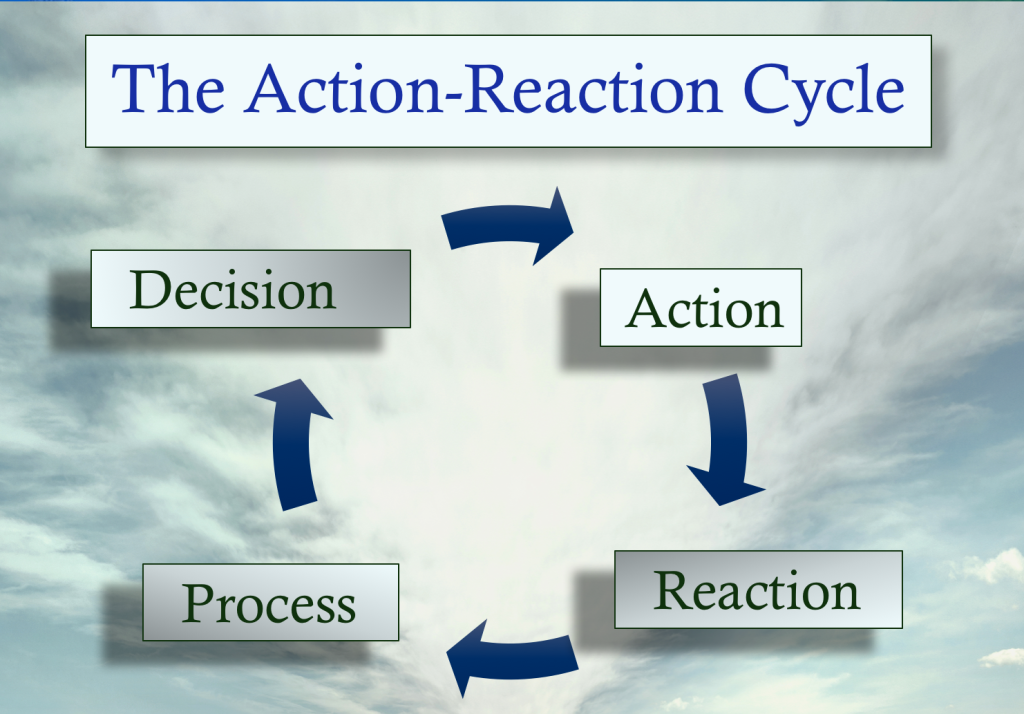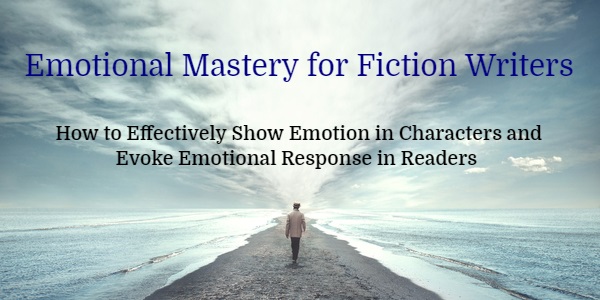Crafting Believable Characters – 3 Easy Steps
Creating believable characters is the key to engaging storytelling. Readers invest in characters who feel real and express emotions, motivation, and responses that resonate with readers.
One effective technique for achieving this authenticity is mastering the action-reaction cycle.
This is a cycle I came up with because in all my decades of writing fiction, I never found anything simple and obvious like this.
You may have heard the phrase “scene and sequel.”
I honestly don’t understand that. Here’s one definition: “A scene is a passage of writing in which the character attempts to achieve a goal. A sequel is a passage of writing in which the character reacts reflectively to the previous scene.” Well, that’s so oversimplified, and it’s not usually true. Not all characters, and not all the time, react “reflectively” to what happened in a previous scene.
But this does contain some element of logic. It just generalizes too much.
Life isn’t all about reflecting on previous actions. It’s a bit more complex. In crafting believable characters, we have to ensure, every step of the way, that our characters’ actions are followed by believable reactions.
Characters must act, then react. Or they’ll witness some action and react to it. But, always, the reaction must trigger some amount of processing—digesting what’s been experienced. Sometimes that’s a brief thought and other times it’s a rumination that stretches across hours or days. Depends on your plot and genre.
And after your character processes, he’s going to come to a decision, which leads to a new action (and the cycle begins again).

We engage in this cycle over and over in any given day. Just go to the fridge (action) and see what’s there to eat (reaction). When your eyes land on that leftover chocolate cake, you make a decision and initiate new action (pull it out, grab a fork, and eat).
Crafting believable characters is easy so long as you show them engaging in this cycle in every scene.
By doing this you will deepen their complexity and draw readers further into your narrative.
Here are three easy steps to crafting characters that feel genuine and compelling.
Step 1: Establish the Action-Reaction Cycle
Understanding the Dynamics of This Cycle
- Every action a character takes should provoke a corresponding reaction, creating a natural flow within your narrative. That reaction is not contemplation or reflection—there is first a visceral reaction (sudden), followed by further knee-jerk response.
- Actions can encompass a broad spectrum, ranging from physical gestures to outburst of speech or emotional decisions, while reactions can manifest as immediate responses or gradual shifts in behavior.
Checking Your Scenes
- Examine of your scenes to ensure the action-reaction cycle is consistently present. Each scene should contain a clear sequence of events where characters act and react in logical progression.
- Verify that the reactions are authentic to each character’s personality, motivations, and circumstances. Avoid contrived responses that undermine the credibility of your characters.
- If you’re in the planning stages of writing a scene, pay close attention to how the action-reaction cycle unfolds. Plot out the sequence of events keeping in mind which stages of the action-reaction cycle your character is going through.
Step 2: Implementing the Cycle in Action Scenes
Crafting Dynamic Action
- In action scenes, the action-reaction cycle becomes particularly crucial for maintaining momentum and tension. Ensure that each action is vividly depicted, immersing readers in the heart-pounding intensity of the moment.
- Experiment with varying pacing and intensity to match the emotional stakes of the scene. Whether it’s a high-octane battle or a quiet confrontation, each action should propel the narrative forward while revealing essential aspects of character.
Step 3: Evolving Character Development through the Cycle
Character Growth and Change
- Over the course of your scene, leverage the action-reaction cycle to facilitate character growth and transformation. Each action should, in some small or large way, challenging their beliefs, values, and relationships.
- Explore the consequences of their choices and the ripple effects they create as each new decision and new action impacts the plot.
Mastering the action-reaction cycle is essential for crafting believable characters that resonate with readers. By ensuring that each action is followed by a realistic reaction, you can create a narrative that feels organic and immersive. But don’t stop there. Every react leads to processing, which leads to a decision and new action.
It’s a cycle, not an alternating “scene and sequel.”
Whether you’re writing intense action scenes or poignant moments of introspection, the dynamics of the action-reaction cycle will enrich your storytelling and elevate the depth of your characters.
Want to learn more? Take my unique in-depth course Emotional Mastery for Fiction Writers!
In this course, you’ll be given tools to show emotions in your characters. You’ll be given techniques to help spark emotional response in your readers. What is going to bring it all together for you is practice. Study and practice. And you’ll have exercises in this course to help you put into practice what you learn.
This course will challenge you to become an “emotion master.” Are you ready and willing to go on this journey deep into emotional territory? If you want your characters to move your readers, take the plunge!












